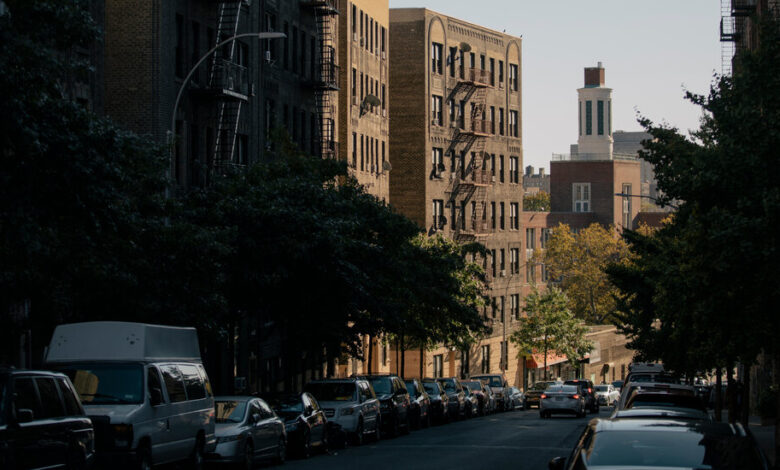New York to Stop Accepting Applications for Pandemic Rental Aid

New York State said on Friday that it would stop taking most requests for its pandemic rent relief for struggling tenants because an overwhelming number of applicants had left the program nearly out of money. The huge demand for aid underscores the severe economic pain inflicted by the coronavirus outbreak.
Since the $2.4 billion program started this summer, the state has received nearly 280,000 applications for help paying overdue rent and utility bills.
As of this week, New York had paid out $1 billion — nearly 85 percent in cases involving New York City renters — with another $1.1 billion committed to be given out but where more paperwork was needed from landlords.
There were an estimated 100,000 additional applications pending, but state officials declined to say how many of those applicants could be denied money.
Officials said the application window would close at 10 p.m. Sunday across the state except in a few smaller counties, like Dutchess and Oneida Counties, which had not yet exhausted their pool of funds.
The development was a striking reversal from this summer, when the state was among the slowest nationwide at distributing its share of rental assistance and when the application process was rife with glitches.
New York did not issue a single payment until August, one of the last states in the country to do so, but is now among the fastest, as several other states have continued to lag.
The development also reflected the severity of the economic crisis in New York, which has more renters than any other state. Even before the pandemic, more than a quarter of the state’s households spent more than half their income on rent and some utilities.
Congress approved $46.5 billion in federal pandemic aid for rental assistance, an enormous infusion of money to help struggling renters, but it has not been enough for the most populous states, especially California, New Jersey and New York. Last week, Texas also said it would not accept new applications after the number of requests exceeded the rent relief available.
The developments in Texas and New York come as the federal government is poised to consider whether to redistribute rent relief from states that do not need it or did not use it to states with greater need. Some housing groups have urged the United States Treasury Department, which distributed the aid, to redirect unused assistance from smaller states.
On Friday, Gov. Kathy Hochul said she had asked the federal government for almost $1 billion in additional funding for rent relief.
“While New York accelerated getting rent relief out the door and moved from the back of the pack to the front amongst other states, there are still many individuals in need of assistance,” she said.
Several members of New York’s congressional delegation also sent a letter on Friday to the Treasury Department emphasizing the need for additional help. They cited how the state continued to receive roughly 10,000 new applications per week.
A state moratorium on evictions that is set to expire early next year has kept thousands of people in their homes even as their arrears continue to pile up. For many who were laid off during the pandemic, the rent relief program is a vital financial lifeline for tenants and for many smaller landlords who rely on rent to pay their own bills.
Generally, households making up to 80 percent of an area’s median income — meaning about $95,400 for a family of four in New York City — are eligible for the program. Tenants must show that they experienced financial difficulties because of the pandemic and fell behind on their rent or are at risk of homelessness.
In most cases, the program will cover up to a year’s worth of rent and utilities, as well as three months of future rent. The payments are sent to landlords, who in return for receiving the aid generally cannot evict tenants for at least a year.
While the application portal closes for most of the state on Sunday evening, a handful of counties, including Westchester and Nassau Counties, still had money to distribute and could accept requests after the deadline. However, the largest municipalities in those counties, Yonkers and Hempstead, were excluded, the state said on Friday.
Applications were expected to remain open for two separate state programs, a $125 million initiative targeting middle-income tenants, as well as another special $125 million program for landlords whose tenants could not or did not apply for other rental assistance programs.
Ellen Davidson, a staff attorney with the Legal Aid Society, a nonprofit that helps people with the rent relief program, said “it would be a disaster if we don’t get more funds, when you look at how many tenants before Covid were struggling to pay rent, and then you put on top of it the extreme economic crisis that came from having to shut down the state in order to save lives.”
Michael Johnson, a spokesman for the Community Housing Improvement Program, a landlord group in New York City, said that based on his organization’s surveys, the number of renters in New York State who qualify for relief but had yet to apply could exceed 100,000.
Some people do not know about the program’s existence, he said, while others do not have internet access to apply.
“The biggest concern is that there are people who might be able to get money but no one has ever reached them,” Mr. Johnson said. “That’s the biggest frustration to this.”
Ann Korchak, a landlord who is a member of the Small Property Owners of New York, said that essentially shutting down the application portal would be another setback for property owners.
“Small owners can’t continue to carry this burden,” Ms. Korchak said. “The burden this is putting on small property owners is crushing.”
The application process has frustrated both landlords and tenants. Both sides must provide documents to the state for payments to be approved, meaning that if one side refuses or cannot be reached, the money will not be issued.
The state had been warning for weeks that the program could be running out of money. But the decision to close the application was met with criticism on Friday.
State Senator Brian Kavanagh, a Democrat who sponsored the bill that created New York’s program, said it was a “mistake.” He said the data collected from the rent relief applications was one of the few ways to understand how many people affected by the pandemic needed aid.
Under state law, the program also prevents people with pending applications for aid from being evicted. By not allowing people to apply, Mr. Kavanagh said, that layer of protection is eliminated, which could take on even more significance when New York’s eviction moratorium expires on Jan. 15.
“I think this is a catastrophically bad decision,” he said.
Source link






